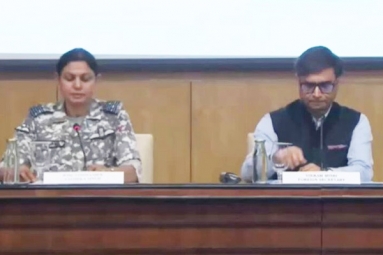
Recent reports from various media outlets suggested that a satellite-based tolling system would take the place of FASTag across the country starting on May 1, 2025. Nevertheless, the government has dispelled these claims. On Friday, the Ministry of Road Transport and Highways (MoRTH) asserted that there has been no decision made for the implementation of either a satellite or GPS-based tolling framework throughout India on the stated date. Toll booths on national highways will continue functioning under the current ICD 2.5 protocol, allowing for real-time validation of FASTag. Users should connect their FASTag wallets to UPI or bank accounts with auto-recharge capabilities for smooth toll payment experiences.
"The media has circulated reports stating that a Satellite-based Tolling System will commence on May 1, 2025, replacing the established FASTag toll collection method. To clarify, the Ministry of Road Transport and Highways and the National Highways Authority of India (NHAI) have not made any decisions about a nationwide satellite-based tolling initiative starting on May 1, 2025," the Ministry of Road Transport and Highways indicated in a statement.
Instead, there will be a trial of a new hybrid tolling system known as the ANPR-FASTag-based Barrier-Less Tolling System along specific routes, including the New Delhi-Mumbai corridor, although there are currently no plans for a nationwide launch. The broader implementation will rely on pilot project success and the feedback of its users. This hybrid toll collection method integrates Automatic Number Plate Recognition (ANPR) technology with the existing FASTag Radio-Frequency Identification (RFID) system. This system is designed to facilitate seamless and barrier-free tolling, allowing vehicles to pass through toll booths without stopping. The intention is to alleviate congestion and enhance traffic flow in toll areas. Vehicles that do not comply will receive E-Notices, and non-payment may lead to the suspension of FASTag and penalties under the VAHAN system.
The NHAI has already called for proposals for system installation at designated sites. However, it is crucial to emphasize that this effort is a limited trial, with no plans for a nationwide implementation at present.
Key Components:
- Automatic Number Plate Recognition (ANPR): AI-enabled cameras capture and interpret vehicle license plates instantly.
- FASTag (RFID-based Tag): This is a toll collection method that utilizes an electronic tag attached to the vehicle's windshield, which is read by RFID systems to automatically deduct toll fees from the driver’s prepaid account.
- Barrier-Free System: This approach eliminates the use of physical barriers like boom gates found in conventional toll booths, allowing for uninterrupted traffic flow, enhancing operational efficiency, and minimizing congestion.
How It Works:
When a vehicle nears the toll area, cameras equipped with ANPR technology record the license plate, while RFID readers identify the FASTag installed on the vehicle. The system verifies the license plate against the FASTag account to confirm its validity. Upon a successful match, the toll fee is automatically subtracted from the associated FASTag account, allowing the vehicle to continue moving without stopping or decelerating. In cases where the vehicle lacks a FASTag or has an insufficient balance, the ANPR system archives the license plate information. The toll amount can subsequently be collected through postpaid invoicing or by imposing a penalty.
Benefits:
Decreased journey duration as a result of efficient toll collection
Better traffic movement and less overcrowding
Elevated user satisfaction with fewer interruptions







